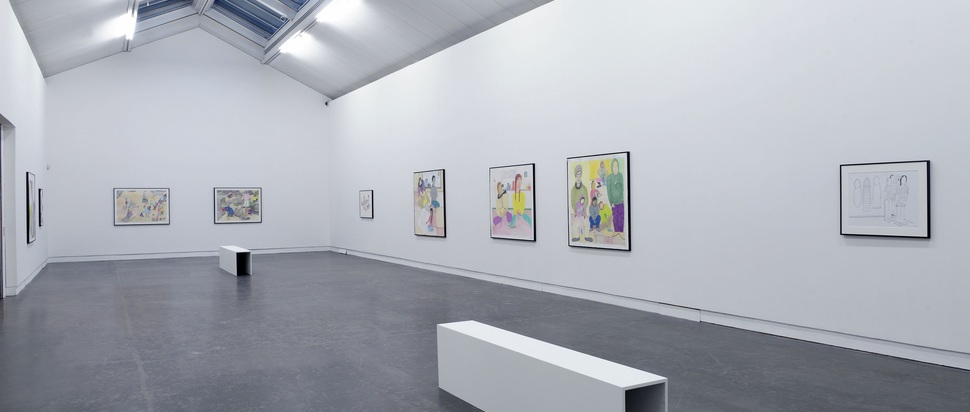Quick Draw: Inuit Artist Shuvinai Ashoona
Inuit Artist Shuvinai Ashoona's drawings are idiosyncratic and virtuosic renderings of memories and fantastical scenes she encounters and imagines whilst living as part of her community in Cape Dorset
Shuvinai Ashoona not only forms worlds of her own memories of her home in Cape Dorset, Nunavut as well as imagined landscapes and beings, but she has created an entirely idiosyncratic form of image-making. There are parents child-rearing in many of the images, as well as more fantastical mythical beings like mermaids and giants made of planets, then fantastical visions of communities in circles around different planets and worlds. The drawings often come across as both comforting and uncanny. A vision of a new life that is startling, but nevertheless welcoming. They are almost all completed in coloured pencil, virtuosically rendered.
How do you know which images to develop into works? Is it from a thought, or from drawing and seeing what comes out?
My drawings happen pretty quickly, I start making them once I have an idea. I have lots of ideas because I get them from the things I see around me, just outside the window, when I’m walking around Cape Dorset or from television. I have so many ideas, that I can draw every day.
Has your way of working changed during the course of your drawing career? Are some things easier or faster than they were before?
If you practise something a lot, it can get easier and faster to do it. I’ve been drawing for a long time so I really know how to do it. But sometimes my drawings take longer to make because I can work with a bigger paper and then I have to draw something big. I don’t know, but maybe it can sometimes take a long time and be harder to finish, like when I’m drawing a big one, it’s harder to finish when there’s lots of details because my hands get sore and tired nowadays.
Often your drawings show people working and living together, and your biography will often refer to the studios you’ve shared with other artists. Why is community and collaboration so important in your work?
Cape Dorset is a small place where many people know each other and there are lots of families. Lots of people start drawing because their father or mother or other family members are artists. We learn from each other, sometimes it’s an elder teaching a younger person but sometimes it’s my friends and other artists who can teach me something new.
Do you think of the drawings as a protection of erasure or forgetting of the culture and lifestyle shown? Do you think the culture and lifestyle you show are in danger of being lost?
I’ve lived a long time in Cape Dorset and lots of people have lived here for a long time. We used to do things differently, in the old days. Now our town has a new cultural centre, where I draw in the studio; it’s a very nice place. Things are more modern now, but some things from the old days are still around. They’re definitely around in my drawings.
What makes drawing a process that is so endlessly fascinating for you?
I draw every day, whenever I can. I come to the studio in the morning ready to draw. Sometimes they are pretty and colourful pictures that I draw, other times they are very different than that, but I like them anyway. Drawings can be anything I want them to be, that’s why drawing is so interesting for me.
The West Baffin Eskimo Cooperative is an organisation that represents 120 artists, whose works the Cooperative sells, with the proceeds distributed amongst the members. Can you speak more about the Cooperative and its impact on your life and work?
Since I started drawing and even when my mother started to draw, and my father, he was a carver, the Coop was around to buy from them. It was a different studio then, it was smaller and down the hill, but they still bought lots of drawings and carvings. I have some paper and pencil and markers that the Coop gives me when I need them. And I come here every day to use them to draw.
Can you describe how you started making art, and the sources of your inspiration and learning?
I started drawing because I was around my mother when she was drawing. This is a way to make money and I like to draw. In the studio, something will happen, or at home I’ll see something on TV and then I just draw it. There are lots of things that help me to draw, I just have to see them or think of them.
Shuvinai Ashoona: Holding on to Universes, CCA, Glasgow, until Sun 22 Mar
